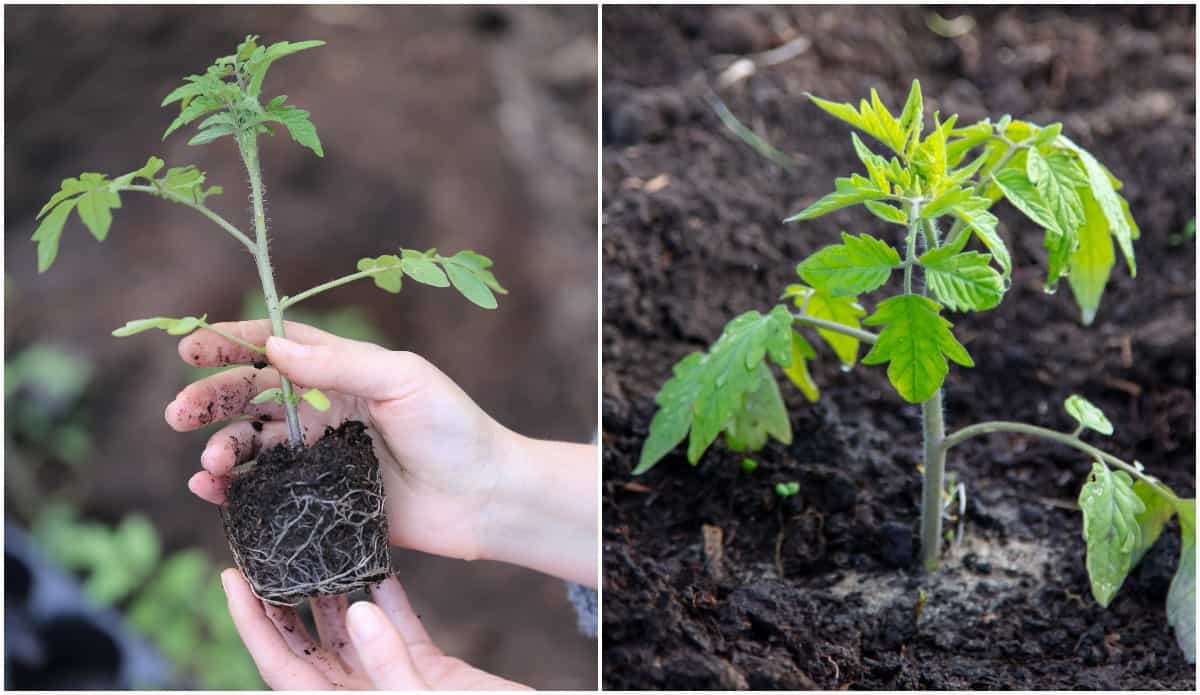
When planting tomatoes, plant them down into the ground at least 6 to 8 inches deep. The simple fact is that the more roots your plants have, the more water and nutrients they can take in. A strong root system not only anchors plants securely in the ground, it also creates a massive network of essential feeding tubes for your plants.

Planting deep allows your tomato plants to develop an extensive underground root system. This one is a big one for sure! A deep planting hole is extremely helpful for the long-term success of tomato plants. #3 Not Planting Your Tomato Plants Deep Enough – 7 Tomato Planting Mistakes Without their presence in the soil, tomato plants simply won’t have the nutrition they need to develop. Rotating your crop also allows the soil time to recharge and replenish important tomato growing nutrients like calcium, nitrogen, phosphorous and potassium. And if planting in pots or containers, remove and replace the soil each growing season to keep your plants in healthy, productive soil. If growing in raised beds, move plants to a new area of soil each season as well. (See: 3 Simple Tricks To Avoid Tomato Blight)

This keeps issues like tomato blight and black rot at bay. In fact, tomato plants should never be planted in the same location for at minimum of 3 years. It is absolutely vital to rotate and move your tomato crop every growing season. Listen in to our podcast on How Grow The Best Tomatoes On The Block! Nutrients that are easily depleted when you continue growing the same crop in the same soil year after year. They also require a large amount of nutrients from the soil for strong growth. Tomatoes are extremely vulnerable to disease, especially soil-borne disease. #2) Planting In The Same Soil – 7 Tomato Planting Mistakes In addition, make sure night time temperatures are staying in the 50’s to keep the soil warm. Inexpensive soil thermometers are a great way to check the soil temperature, but as a general rule of thumb, allow at least 10 days of 70 degree weather to warm up your soil before planting. Instead, they go into a dormant-like state that can leave the plant vulnerable to mildew and rot.Īllow your soil to warm up to at least 60 degrees (Fahrenheit) to promote strong, early growth. When young tomato transplants go into cold soil, their roots fail to develop. Unfortunately, in cold, damp soil, tomatoes simply won’t grow. Some of which, such as a frost or freeze, they may never fully recover from.Īllowing the soil to warm to around 60 degrees is one of the best things you can do for your young tomato plants before planting. Planting in cold soil with cool air temperatures can lead to a whole host of problems for young tomato plants. Nothing can spell disaster more for a tomato plant than going into the soil too early in the season. Here is a look at 7 key planting mistakes to avoid to grow your best crop of tomatoes ever this year! The 7 Biggest Tomato Planting Mistakes To Avoid #1) Planting Too Early But by simply avoiding a few key planting mistakes early in the season, you really can set your tomato plants up for smashing success.

Whether it’s dealing with under-performing plants, pest problems, or disease, tomatoes can bewilder and frustrate even the most seasoned gardener. But they can also be one of the most frustrating. Tomatoes are one of the most beloved crops of all for the home vegetable gardener.
#Transplanting tomato seedlings how to
And today, we are going to talk about how to avoid 7of the biggest planting mistakes to grow your best crop ever!
#Transplanting tomato seedlings full
Whether it’s planting tomatoes in a garden, raised beds or containers, there are a few costly planting mistakes that can really hold a crop back from reaching its full potential.


 0 kommentar(er)
0 kommentar(er)
